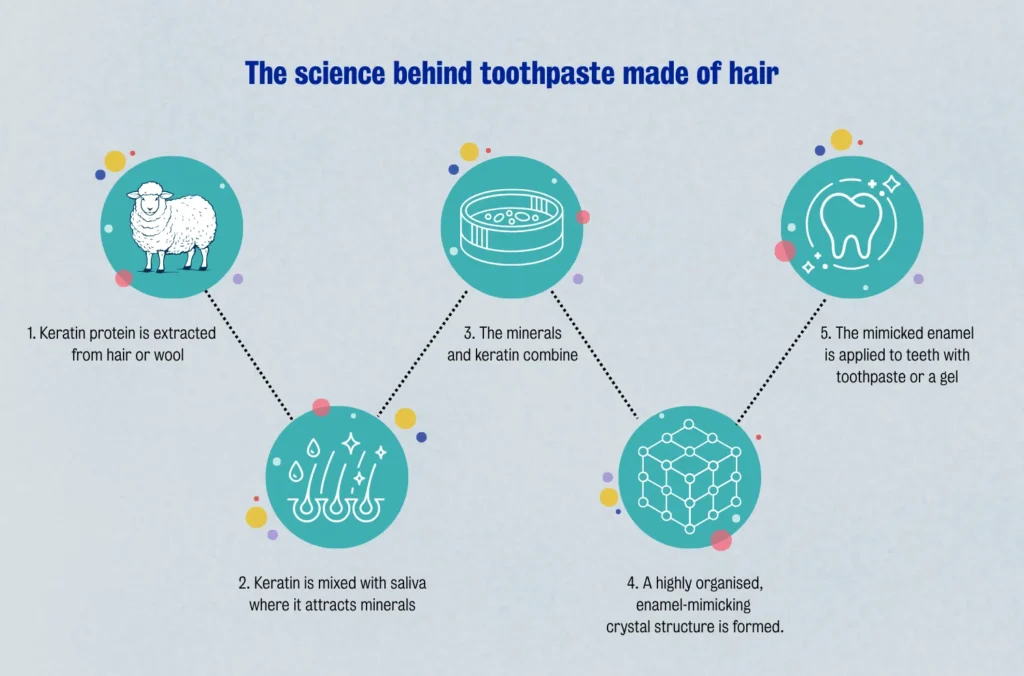King’s College London researchers have discovered that keratin—a protein found in hair, skin and wool—can repair tooth enamel and arrest early decay by forming a protective, enamel-like coating.
Their study, published in Advanced Healthcare Materials, found that when keratin extracted from wool is applied to the tooth and comes into contact with minerals in saliva, it builds a highly organised, crystal-like scaffold that mimics natural enamel structure and function. Over time, the scaffold attracts calcium and phosphate ions, promoting the growth of a protective enamel-like layer.
Unlike bones and hair, tooth enamel cannot regenerate, so this represents a significant breakthrough in regenerative dentistry. Researchers believe keratin treatment could be delivered as a daily toothpaste or as a professional gel application, potentially available to the public in about two to three years.

‘As simple as a haircut’
“We are entering an exciting era where biotechnology allows us not to treat symptoms alone but to restore biological function using the body’s own materials. With further development and the right industry partnerships, we may soon be growing stronger, healthier smiles from something as simple as a haircut,” says Dr Sherif Elsharkawy, senior author and prosthodontics consultant at King’s College London.
Meanwhile, PhD researcher Sara Gamea, first author of the study, adds: “Keratin offers a transformative alternative to current dental treatments. It’s sustainably sourced from biological waste like hair and skin and removes the need for plastic resins commonly used in restorative dentistry, which are toxic and less durable. It also more closely matches the natural tooth colour.”
As concerns increase over healthcare sustainability and long-term fluoride use, keratin emerges as a promising, biodegradable alternative that taps circular economy principles and turns waste into a health-promoting resource.
Read related article: Researchers turn urine into material for dental and bone implants

